Sweet potatoes are one of the easiest crops to grow, but because they’re underground, it can be a little tricky to know when and how to harvest them and then store them properly. So I’m gonna go over, not one, but five different times you might want to harvest sweet potatoes, a few different ways to harvest them, plus how I plan on curing and storing my sweet potatoes this year.
When To Harvest Sweet Potatoes
Ok, listen to this craziness… You can actually harvest sweet potatoes at 5 different times. That’s good news, because it’s gonna be hard to f- up the harvest times here.
1. Summertime
So the first time you’ll want to harvest sweet potatoes, you’ll want to harvest the leaves, and you’ll do that in the summer time, when the leaves are nice and fresh looking. So this…
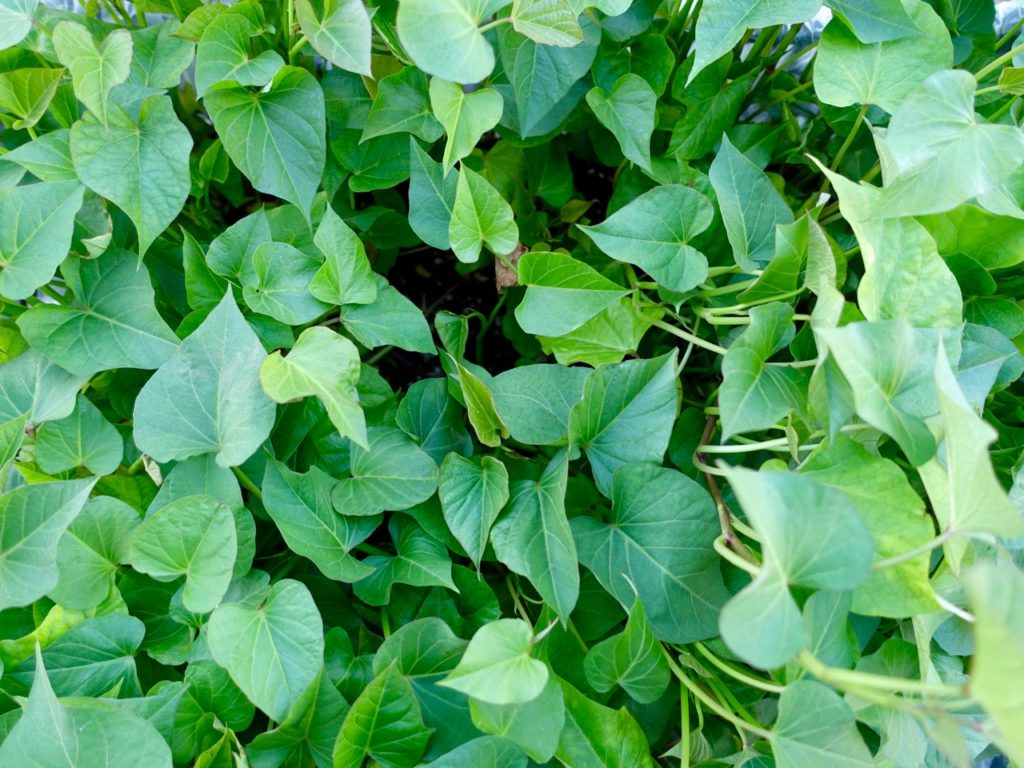
Not this… Nobody wants to eat these skanky leaves!

Sweet potato leaves are grown in Africa and Asia partly for their greens. They’re a little bitter, like turnip greens, but in a good way. You can eat them fresh or sautéed just like you would spinach.
Sweet potatoes are what I call a double-duty crop, a plant that you can harvest multiple parts from which is really awesome if you have a small garden. It means you can get double or even triple the harvest out of the same space. I made videos about some other double-duty crops that I love, edible broccoli leaves and garlic scapes, which are both super yummy.
2. Right-Sized Roots
So the second time you’ll want to harvest your sweet potatoes, is, I know this is going to sound like a cop-out… but whenever you like the size of the sweet potatoes! There’s no rules here. You can actually get edible, storable roots within 2 weeks of planting. So anytime after that is fine.
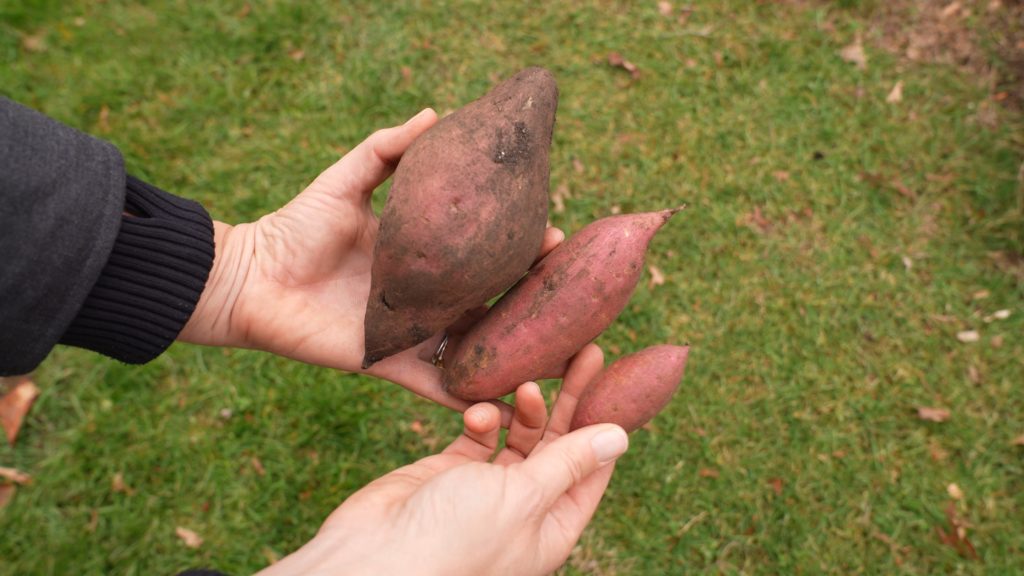
You can see what size the roots are by just getting in there with your hands or gently lifting the roots with a garden fork.
A lot of people prefer sweet potatoes at the smaller fingerling size, for roasting. Or some people (me!) eat a lot of sweet potato fries, so you’ll want to wait for them to become huge, like softball sized.
Be careful, because when they get that big, they can split, which makes them more prone to spoiling. So if you find your sweet potatoes are splitting, try checking them earlier.
Just be gentle when you check the size, try not to disturb the roots too much if you plan on continuing to let the other plants grow, or you find they’re not ready yet.
3. Maturity Date
The third time you might want to consider harvesting is the variety’s maturity date, usually 85-120 days. So check your plant info and mark your calendar for the harvest date and go by that.
4. Yellow Tips
Another sign you might need to harvest is when the tips turn yellow. For me, that was a couple weeks before first frost.
Sweet potatoes are a tender perennial, meaning they will grow forever in the warmer part of the world, in the U.S., zones 9-11. In these areas you won’t see yellow tips because the yellow tips are the plant’s reaction to fall and cooler temperatures. So you guys living in warmer areas, use the first three methods to time your harvest, otherwise your sweet potato roots will keep growing into giant head-sized monstrosities. For the rest of us in cooler areas, the yellow tips are a sign that the end is nigh, and we should start digging.
5. First Frost
The last opportunity you’ll have to get your sweet potatoes is the first frost.
So the first predicted frost date or the actual first frost works. My sweet potatoes suffered a little bit of light frost damage a couple days ago, so I figured its now or never. That’s why I’m harvesting now.
Once the frost hits, the leaves die back and the roots, our sweet potatoes, have about a week before they’ll start rotting in the ground.
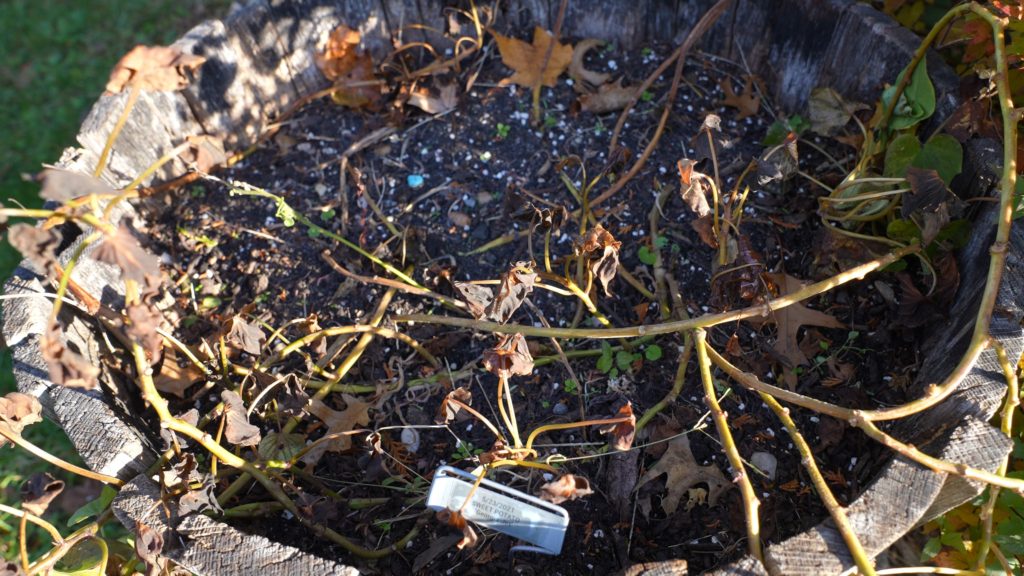
Dead vines will pass decay to the root, so if the vines are completely killed, cut them off, even if you can’t harvest immediately. Sweet potatoes will start to get damaged if the soil goes below 55ºF so make sure you get to them quick if the frost is upon you.
How To Harvest Sweet Potatoes
To start with, it’s usually easier if you cut the vines off first. You can prune them off for containers or mow them down if they’re planted in the ground. I used my trusty Felco pruners. The University of Missouri Extension says that cutting the vines off a few days before harvest makes the skins toughen up even more, so do that ahead of time if you can!
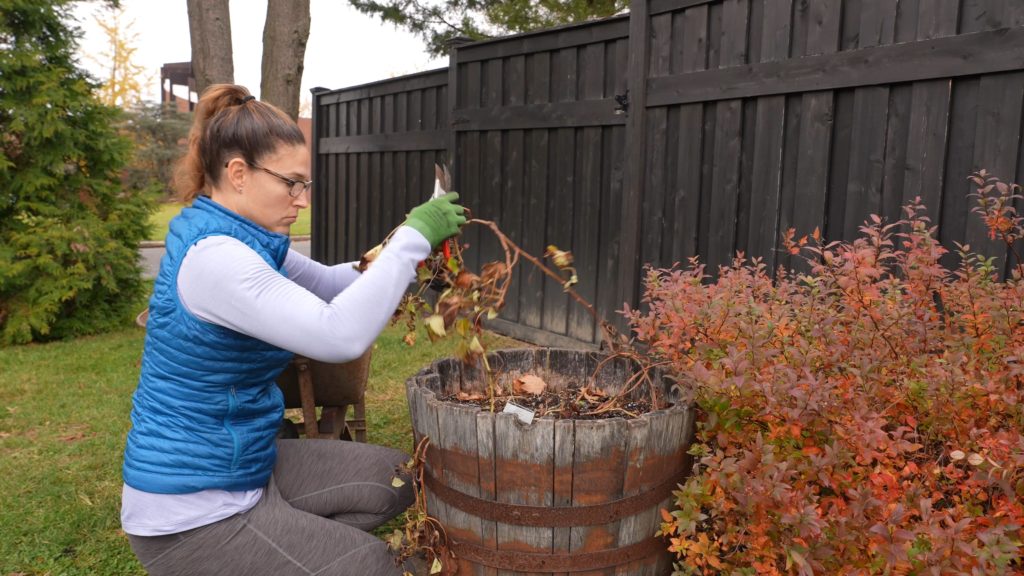
If the soil is a dry, give it a quick, light watering. This will reduce abrasion to the potato’s skins, and increase storage life.
There’s a couple of ways you can get the roots out now.
1. Gangsta Hands
First, is old school with the hands (and gloves!). This is a great method if you have nice loose soil or just like getting your hands dirty. Just dig around and pull ’em out. Kinda like a treasure hunt. Kids will love this.
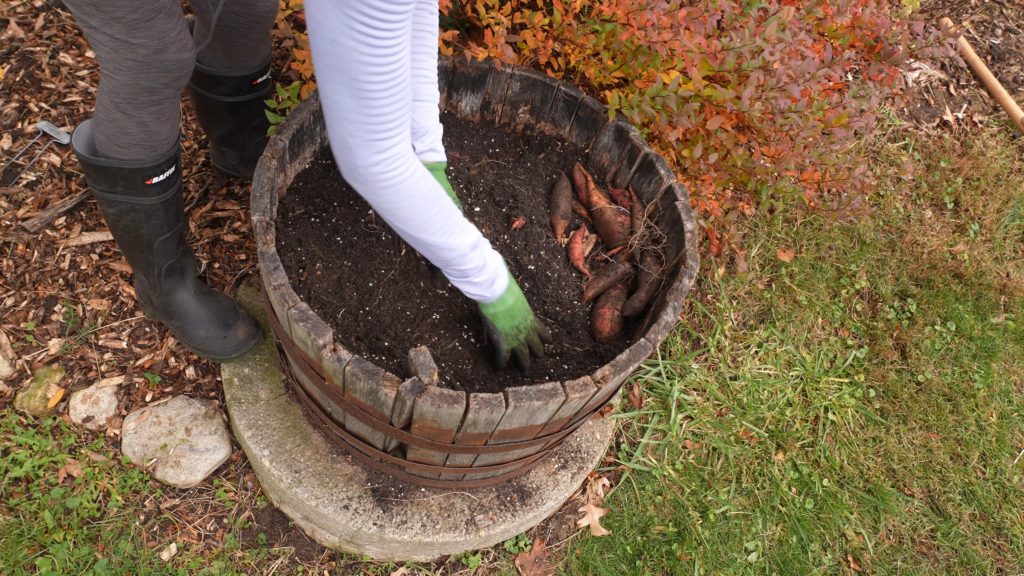
2. Tip the Container
If you have containers, you can also do what a lot of potato growers do and just gently dump the container over and then sift through the soil.
3. Fork or Shovel
If you have a larger area, like large raised beds or in-ground rows, I’d recommend a garden fork or dull shovel. Try to slide in around the edge of the bed so you don’t accidentally pierce a potato and just lift the soil enough to separate the potatoes from the soil. If your soil is loose enough and your potatoes are big enough, you can use a garden fork like a colander where all the soil falls through and leaves the sweet potatoes on the fork.
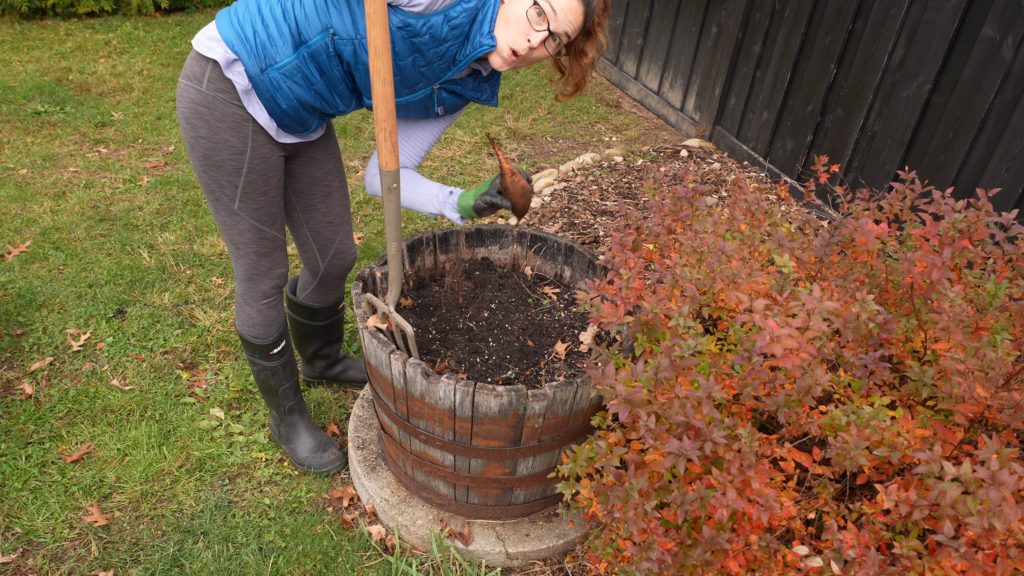
The most important thing here, with all of these methods is not to bruise or scrape or pierce the sweet potatoes. Don’t even wash or drop them. Otherwise they won’t cure or store very well.
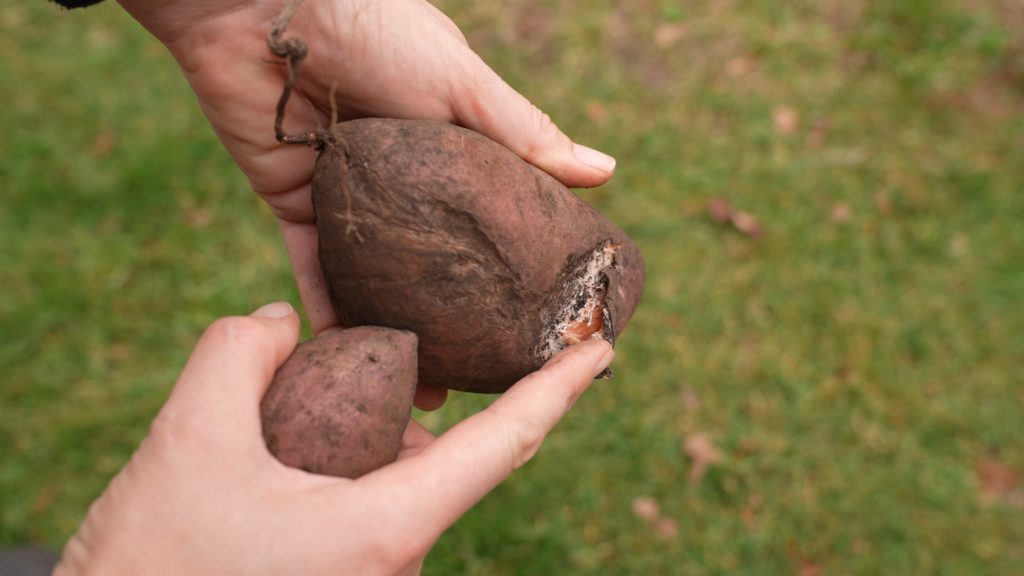
I think with all these methods, the hands are my favorite. It’s a little more labor intensive, but I know the sweet potatoes are safer, and I feel like I miss less sweet potatoes in the ground because I can feel around for them better.
If you guys have another favorite harvest method or special trick, let us all know in the comments!
How to Cure Sweet Potatoes
Ok so now we should have a pile of dirty, fairly undamaged sweet potatoes at this point, right? The next step is to cure them, which heals any abrasions they do have and increases the sugar content, which is well appreciated by those of us who do not put marshmallows on our sweet potatoes.
For IDEAL curing they should be left for 4-6 days at 80-85ºF in a humid (90% humidity) environment. Now personally, I do not have a space exactly like that in my house in mid-November, and I’m not about to jack the heat up to roast us all alive… so the best these guys are gonna get is an upstairs bedroom, which probably stays an overly toasty 70-75º during the day.
Then I’m gonna put some seedling heat mats underneath these trays to make up the difference. You can also put your sweet potatoes in a small closet with a thermostat-controlled space heater to keep them warm, put them in a green house, or put them in plastic bags in direct sun.
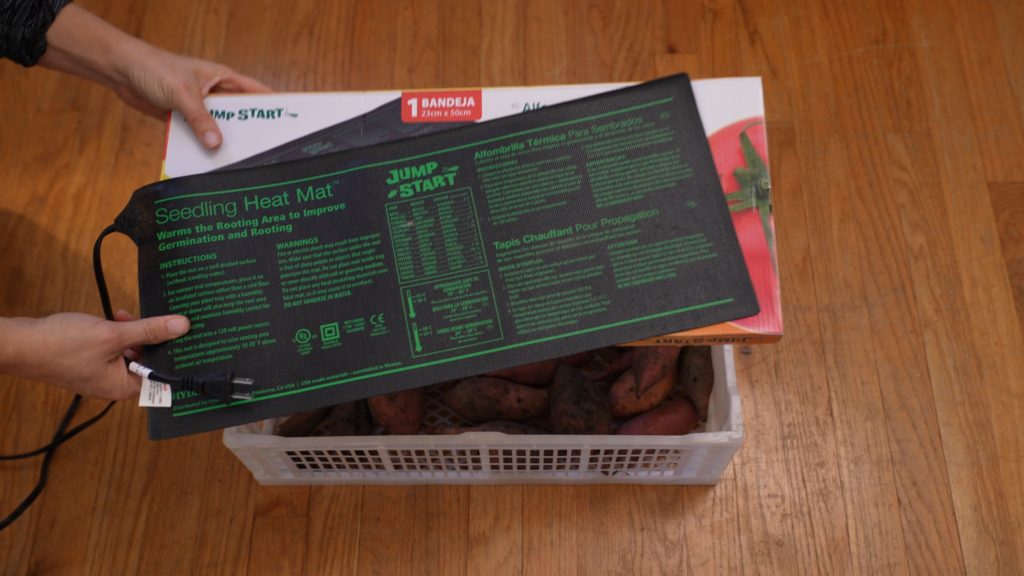
For the humidity, I’m gonna throw a blanket over top of them. That should trap the moisture and heat in there. Then I’m gonna throw a bowl of water in there for good measure.
To keep an eye on things, I have a fun little gadget called a Sensor Push. I use this sometimes in the winter with the indoor seedlings or my outdoor cold frames to keep an eye on temperatures and humidity. And I can even program it to alert me if the temperatures go too high (like in my cold frames in the spring) or too low (like my seedling trays in my basement).
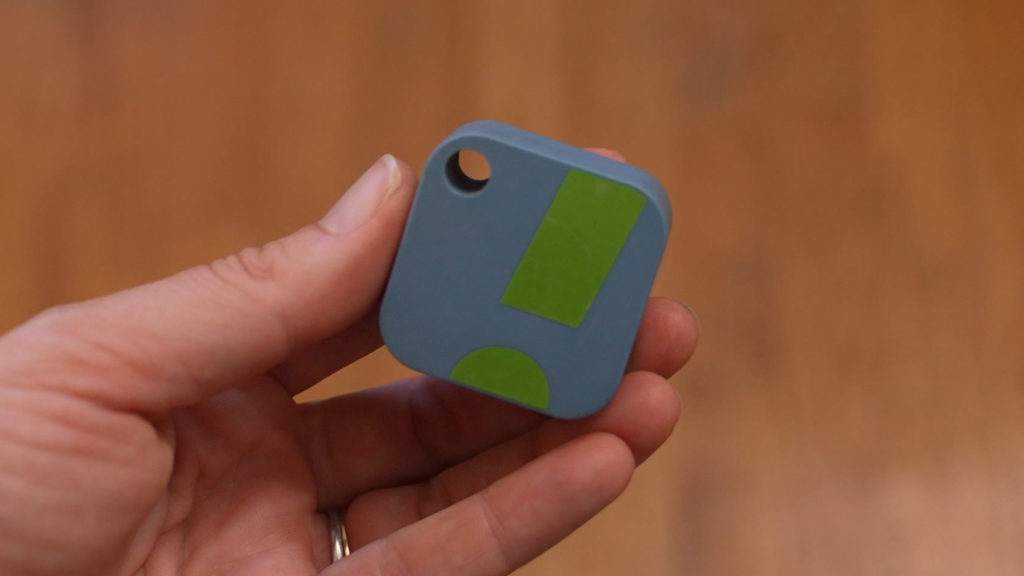
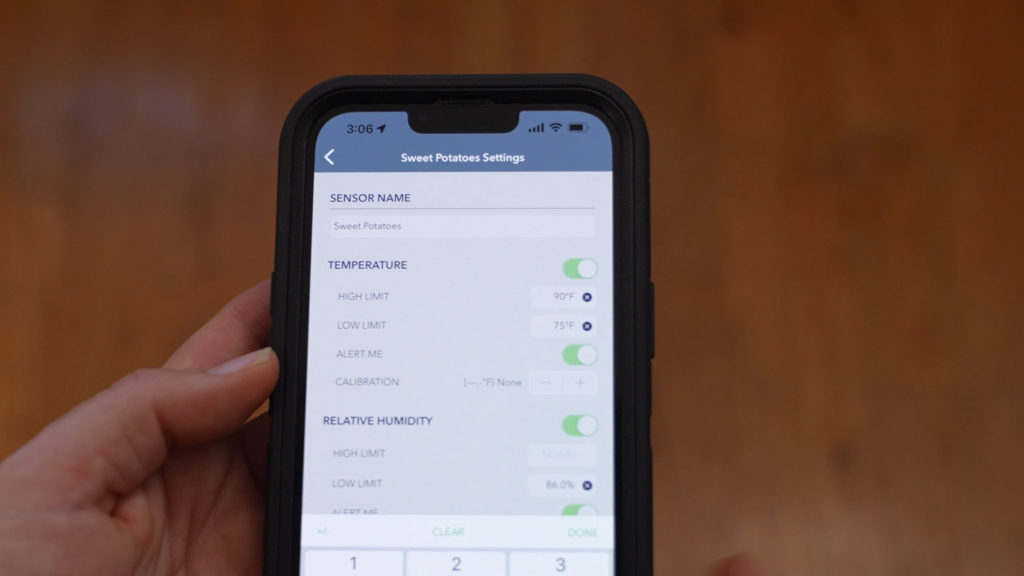
How to Store Sweet Potatoes
Ok, so fast forward 4-6 days now… These guys are all cured up. It’s time for storage.
Important here, guys… do not store them in the refrigerator! Refrigerators are too cold. If you remember, sweet potatoes start to get damaged if the soil goes below 55ºF. Most refrigerators are only a few degrees above freezing, in the 34-40ºF range, so that is going to damage the sweet potatoes.
They prefer to be stored at 55-60ºF at 90% humidity.
The closest place I have in my house to that is my unfinished basement. It’s cool and damp down there. I don’t think it’s 90% humidity, but I’m gonna keep the blanket and bowl of water with these guys to try to keep that humidity up. And I’m gonna continue monitoring them with the Sensor Push.
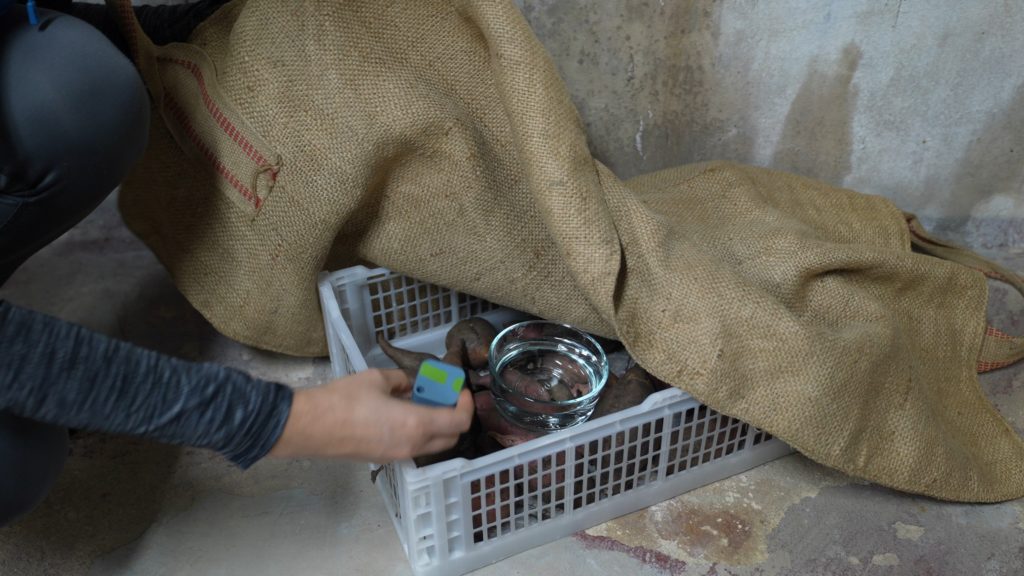
Under perfect conditions, sweet potatoes will last 6-10 months like this. Since I don’t exactly have a Sheraton for sweet potatoes here, I’m hoping to get three months in these conditions.
We’ll probably eat a lot of these in the next month, so it’s not a big deal if they don’t last for 10 months.
I consider Operation Sweet Potato harvest a success! I’m super stoked about having these around this winter. (You know, for like, fries and stuff.)
I hope this post helped you out. Remember to sign up for my email newsletter for more garden resources. Keep gardening like a boss and I’ll see you guys soon!


Thank you April for all the gardening advice.especially in these hard times where we are going to have to plant to survive.
I’m so glad it was helpful for you Cynthia! Sweet potatoes are definitely a great “survival” crop. I’ve seen it listed on quite a few prepper’s “top survival crop” lists.